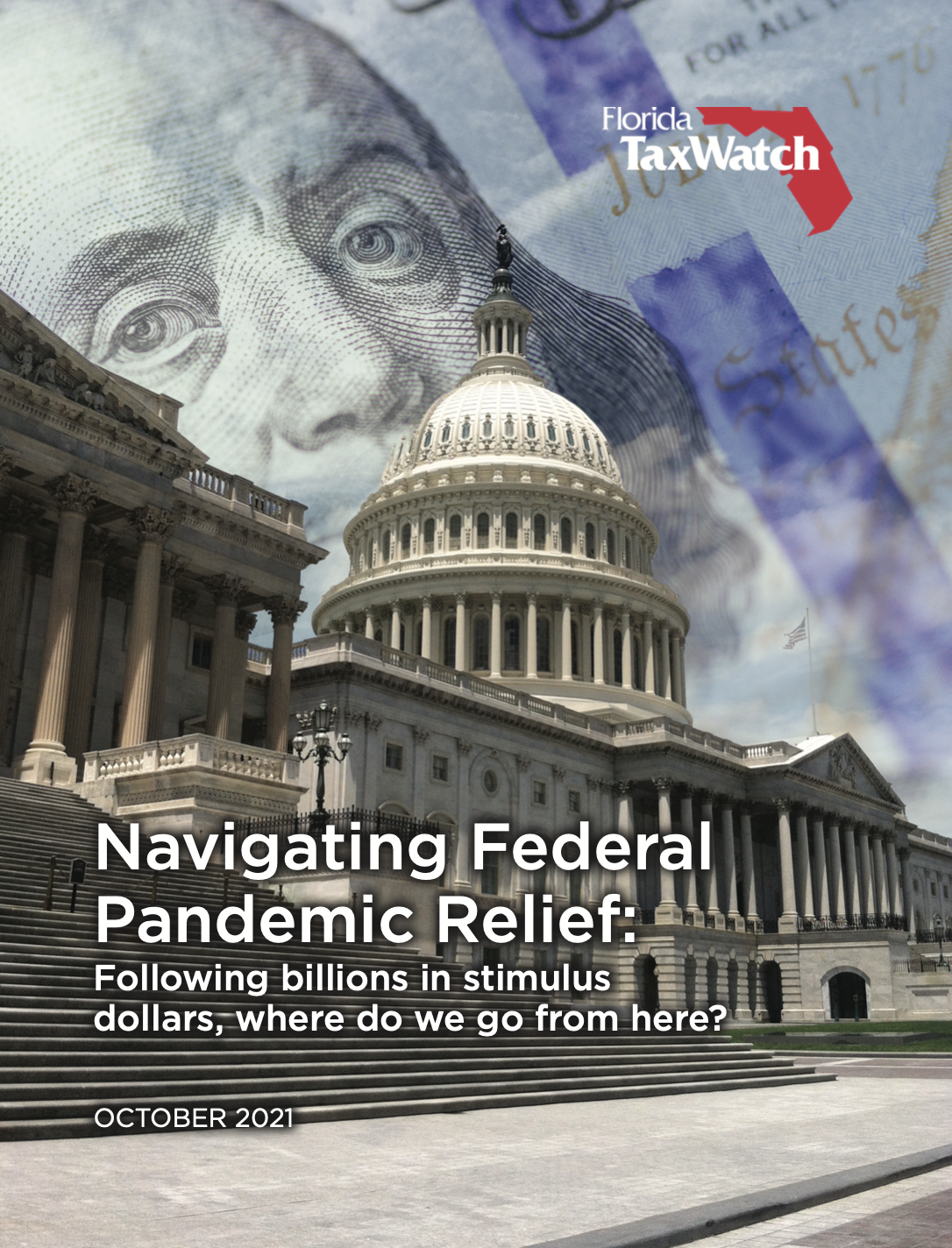Navigating Federal Pandemic Relief: Following billions in stimulus dollars, where do we go from here?

The massive amount of federal funding provided in the six stimulus acts provides an unprecedented opportunity to improve Florida and fund programs and infrastructure that have had long-standing backlogs with few past feasible opportunities to address to this degree.
Most of the tens of billions of dollars Florida has received (and is still receiving) is restricted to specific policy areas, such as education and housing. However, Florida will be receiving an additional $4.408 billion from the American Rescue Plan’s Coronavirus State Fiscal Recovery Fund (CSFRF), $3.470 billion of which has not been obligated. The state received half of its share ($4.408 billion) late in FY2020-21 and the Legislature appropriated $5.346 billion45 in the FY 2021-22 General Appropriations Act. The money was technically appropriated for FY2020-21 but there was a provision to reappropriate the money for FY2021-22 if the state didn’t receive enough of the funds in FY2020-21. The U.S. Treasury Secretary has the authority to hold the second half of the payment for up to 12 months. The first payment was received on May 19, 2021, so the second payment should be received before the end of FY2021-22. Florida does have more discretion with these funds (within the requirements in the ARP) and the decision over how, when, and where to spend it will be difficult and the debate likely intense.
Florida has until December 31, 2024 to obligate the money and until December 31, 2026 to spend it. The Legislature should be deliberate in its decision process on how to use the additional SFRF funding. The state has already spent or appropriated $11.91 billion46 of the partially discretionary recovery funding and billions more in education, child care, housing assistance. And they have billions more in restricted use funding to appropriate/ distribute, particularly the $7.038 billion in education funds to be distributed to school districts from the ARP (ESSER III).
While most of the $5.9 billion in funds was technically spent on appropriations in the FY 2020-21 budget, it resulted in $6.3 billion remaining in the GR Fund at the end of FY 2019-20. It is now estimated that the GR ending balance (cash reserves) will grow to $7.3 billion at the end of the current budget year (FY2021-22). This is effectively CARES Act Fiscal Recovery Fund dollars and the 2022 Legislature will likely spend some of those reserves.
Florida TaxWatch makes the following recommendations to help Florida take full advantage of this unprecedented funding opportunity:
- State agencies, the Governor’s Office, and the Legislature should strive to maximize the state’s receipt of federal funding available from the six stimulus packages, unless there is a compelling reason why the state would be better off not accepting a specific funding opportunity. There is a legitimate concern with the magnitude of this recent federal largess and the impact on the national deficit, but Florida should not leave money on the table that could provide significant benefit to Floridians and help create a stronger, more diverse, and resilient economy.
- Avoid any unnecessary delay in distributing federal dollars to recipients if they are ready to spend the money efficiently and effectively. Most critically, the apparent bottlenecks and obstacles to the timely obligation and spending of federal education funding—specifically ESSER dollars—need to be identified and addressed. School districts and other recipients must do their part by timely submitting detailed spending plans that reflect federal and state requirements and meeting other requirements necessary to receive the money. The Department of Education must make the review of districts’ detailed spending plan a priority.
- The Legislature should carefully consider the ramifications of Maintenance of Effort (MOE) requirements when it deliberates on the next education budget and the spending of ESSER III or other funds that have MOE conditions.
- Be mindful of deadlines and expiration dates for various federal funding streams. Funds with the earliest expiration dates must be the priority.
- Florida’s Congressional delegation should work to get more of Florida’s fair share of funding from the proposed infrastructure bill. The $19.1 billion is currently estimated to receive is certainly a lot of money (and the fourth largest amount among the states), but Florida is currently slated to receive the lowest amount per capita in the nation. This would continue Florida’s long history of not getting its fair share from federal grant programs. Florida should also aggressively pursue the competitive grant opportunities proposed by the bill.